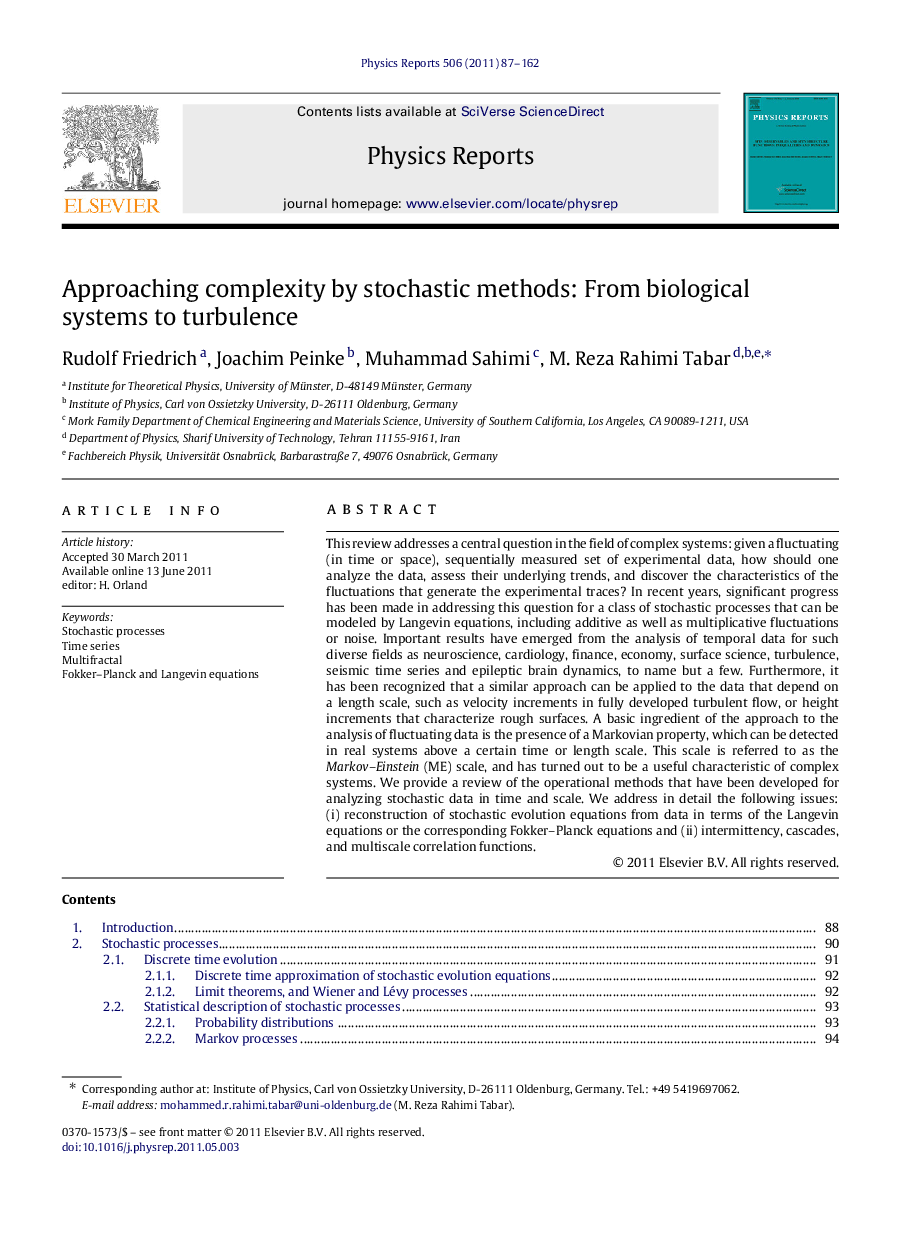| Article ID | Journal | Published Year | Pages | File Type |
|---|---|---|---|---|
| 1873133 | Physics Reports | 2011 | 76 Pages |
Abstract
This review addresses a central question in the field of complex systems: given a fluctuating (in time or space), sequentially measured set of experimental data, how should one analyze the data, assess their underlying trends, and discover the characteristics of the fluctuations that generate the experimental traces? In recent years, significant progress has been made in addressing this question for a class of stochastic processes that can be modeled by Langevin equations, including additive as well as multiplicative fluctuations or noise. Important results have emerged from the analysis of temporal data for such diverse fields as neuroscience, cardiology, finance, economy, surface science, turbulence, seismic time series and epileptic brain dynamics, to name but a few. Furthermore, it has been recognized that a similar approach can be applied to the data that depend on a length scale, such as velocity increments in fully developed turbulent flow, or height increments that characterize rough surfaces. A basic ingredient of the approach to the analysis of fluctuating data is the presence of a Markovian property, which can be detected in real systems above a certain time or length scale. This scale is referred to as the Markov-Einstein (ME) scale, and has turned out to be a useful characteristic of complex systems. We provide a review of the operational methods that have been developed for analyzing stochastic data in time and scale. We address in detail the following issues: (i) reconstruction of stochastic evolution equations from data in terms of the Langevin equations or the corresponding Fokker-Planck equations and (ii) intermittency, cascades, and multiscale correlation functions.
Related Topics
Physical Sciences and Engineering
Physics and Astronomy
Physics and Astronomy (General)
Authors
Rudolf Friedrich, Joachim Peinke, Muhammad Sahimi, M. Reza Rahimi Tabar,
